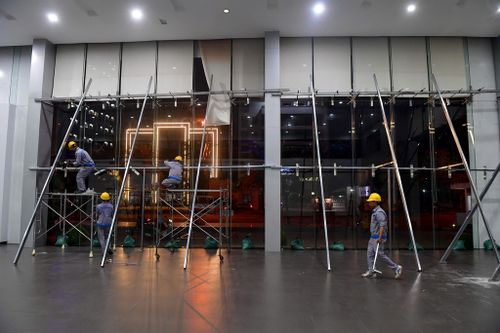Share this @internewscast.com
On Thursday, the fate of three fishermen turned tragic when their boat was engulfed by powerful waves off the coast of Ly Son Island in Vietnam’s Quang Ngai province. A search mission was promptly initiated, yet it was halted as deteriorating weather conditions made the operation perilous, according to reports from state media.
Meanwhile, the authorities have been mobilizing efforts to safeguard lives, successfully evacuating over 537,000 individuals, with many being transported by boat, as rising floodwaters and the threat of landslides grew increasingly imminent.

The Philippines, notorious for its vulnerability to natural disasters, endures approximately 20 typhoons and storms annually. This island nation is also frequently shaken by earthquakes and houses more than a dozen active volcanoes, cementing its status as one of the most disaster-prone regions globally.
Similarly, Vietnam grapples with about a dozen typhoons each year. This year has been particularly relentless, with the nation barely catching its breath between calamities. A series of devastating storms has left communities in turmoil, struggling to recover before the next onslaught.
In a span of just two weeks, Vietnam faced the wrath of Typhoon Ragasa in late September, followed by Typhoon Bualoi hitting the central coast, and Typhoon Matmo causing severe flooding in the north. These three consecutive storms have resulted in over 85 casualties or disappearances and inflicted damages estimated at $US1.36 billion, or $2.16 billion.
With nearly half of Vietnam’s population residing in areas prone to flooding, the nation is among the world’s most susceptible to such disasters. Experts caution that the intensifying storms and increased rainfall throughout Southeast Asia, attributed to a warming climate, are making catastrophic floods like those witnessed this year both more common and more devastating.













